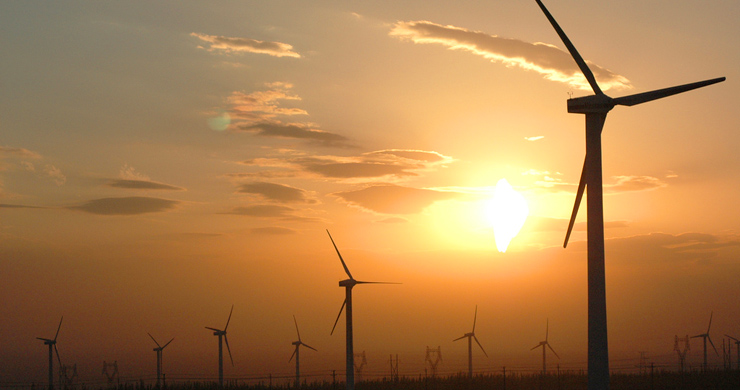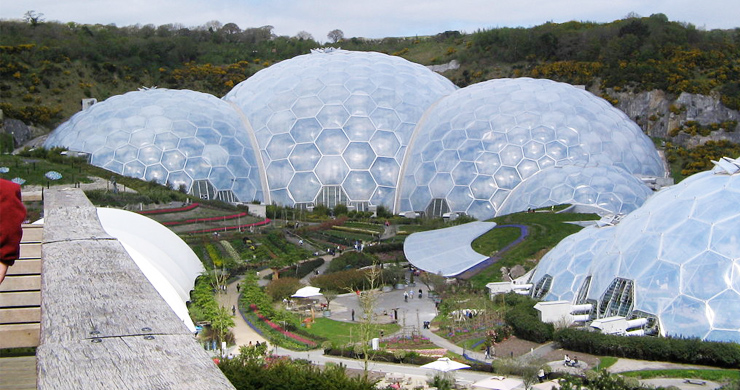What are the consequences and what we can do to reduce climate change?
Consequences
Consequences of climate change are the things that could happen or are already happen as a result of climate change. Most of the consequences will be negative but in some places there will be some opportunities.
Poorer less developed nations will probably suffer most as a result of climate change as their populations are often much closer to a crisis level to start with and their governments also have less money to deal with the consequences.
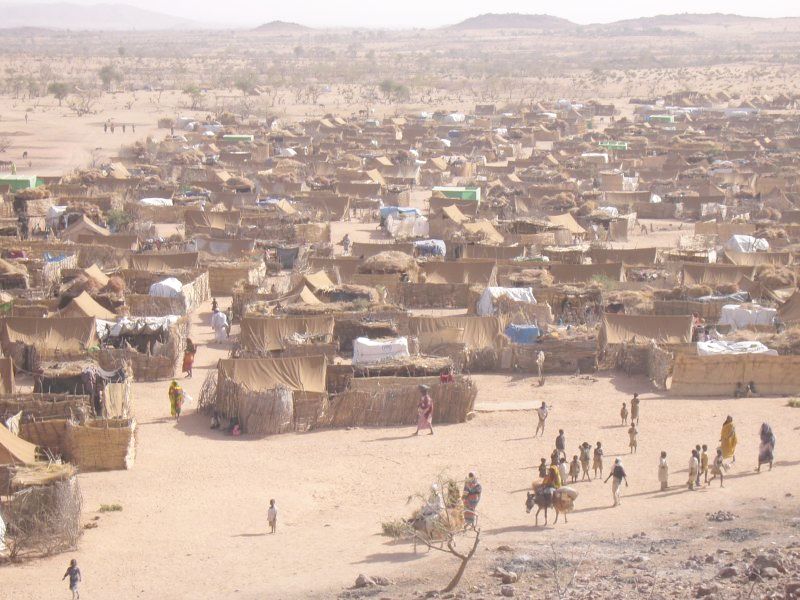
Image: Darfur refugee camp in Chad - Mark Knobil © Wikimedia Commons under Creative Commons Attribution 2.0 Generic
Temperature Increases
Global temperatures have already increased by over 1°C; however the rise is not the same everywhere. The Polar regions, especially in the Arctic are warming much more than other areas.
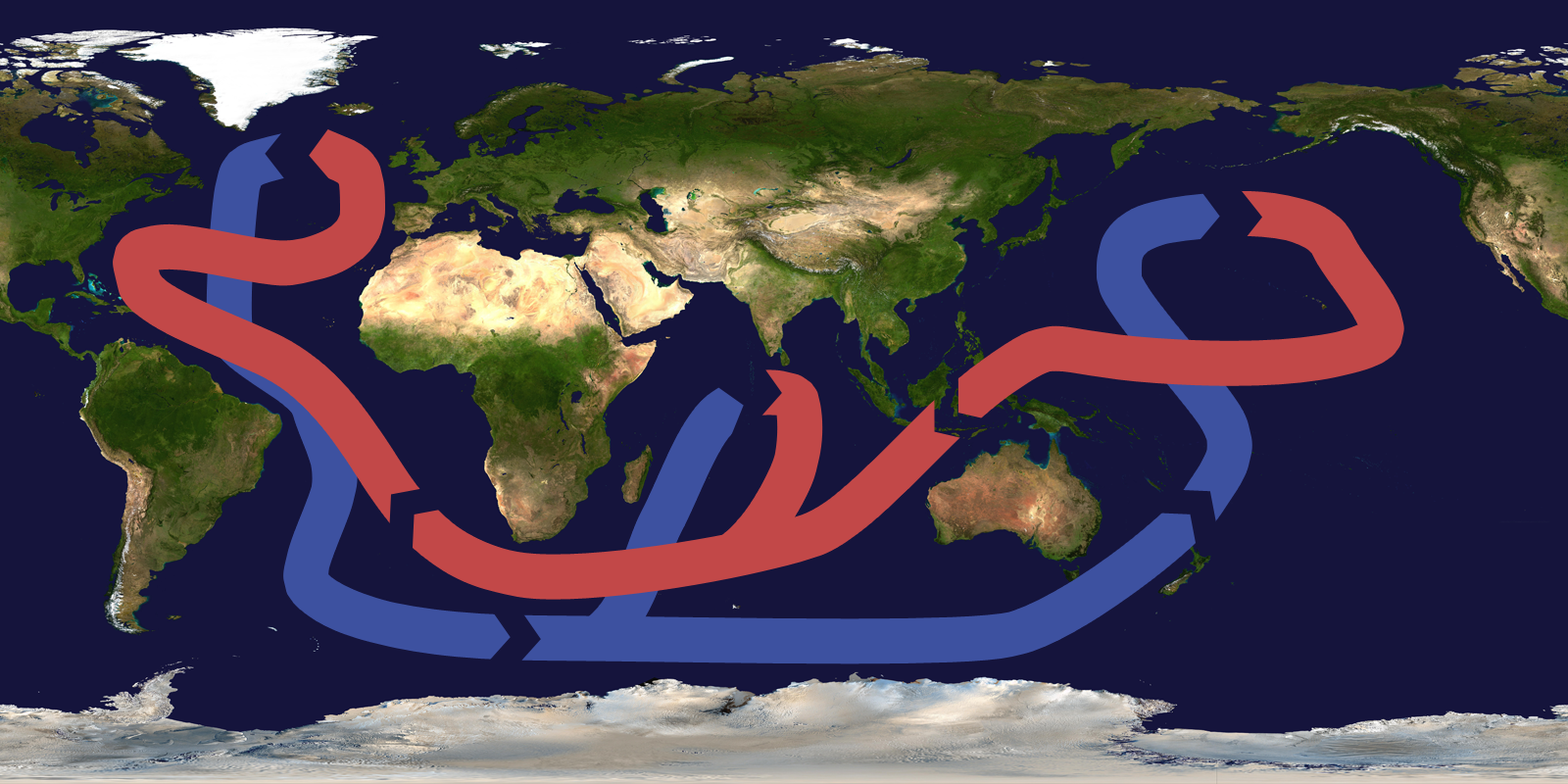
Image: Thermohaline circulation - Brisbane © Wikimedia Commons under Creative Commons Attribution-Share Alike 3.0 Unported / GNU Free Documentation License
Despite global increases some places could actually get colder; Western Europe such as Wales and the UK could become colder due to changes in the warm ocean current called the North Atlantic drift that flows from south to north off our western coast.
Sea Level Rise
Sea levels are predicted to continue their current rising increasing the risk of flooding along coastlines. The main reasons for this are to do with thermal expansion of the water. As many substances get warmer they expand or get bigger; this will increase the volume of the oceans and so increase sea levels.
Currently there is a lot of ice sitting on top land in places like Greenland, Alaska, Scandinavia and in high mountain ranges. If this ice continues to melt then sea levels will rise. Just the ice on Greenland could increase sea levels by around 6 metres.
Map showing (in red) a 6 metre sea level rise
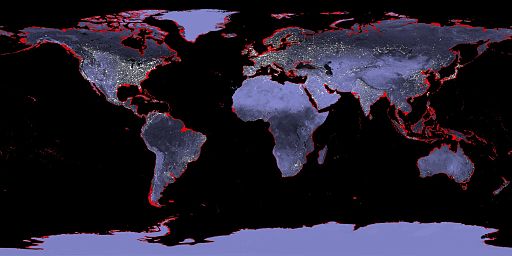
Image: 6m Sea Level Rise - NASA © Wikimedia Commons - Public Domain
Storms
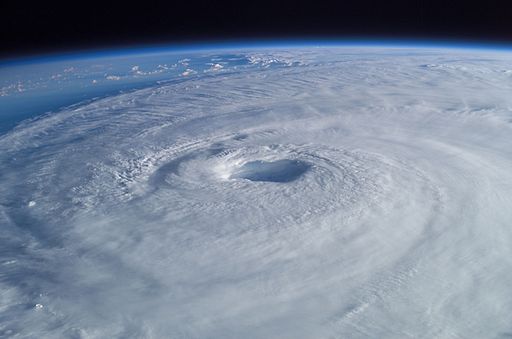
Image: Hurricane Isabel from ISS - Mike Trenchard, Earth Sciences & Image Analysis Laboratory, Johnson Space Center / NASA © Wikimedia Commons - Public Domain
Tropical storms such as hurricanes are formed by ocean temperatures above 26.5°C; as more of the ocean’s surface area would be above this temperature then new areas could experience these tropical storms.
Hotter surface land temperatures would cause more convectional heating of the air. This would result in a greater frequency and severity of convectional thunderstorm in hot parts of the world such as Equatorial Africa and in places like the UK in summertime.
There is growing evidence that in areas such as the UK that there is a greater frequency and severity of depressions or storms.
Heat waves and droughts
Certain areas such as Southern Europe and Sub-Saharan Africa are already experiencing these. Other areas such as large parts of Australia and the continental interiors of North America and Eastern Europe are also in real danger as predicted by models.
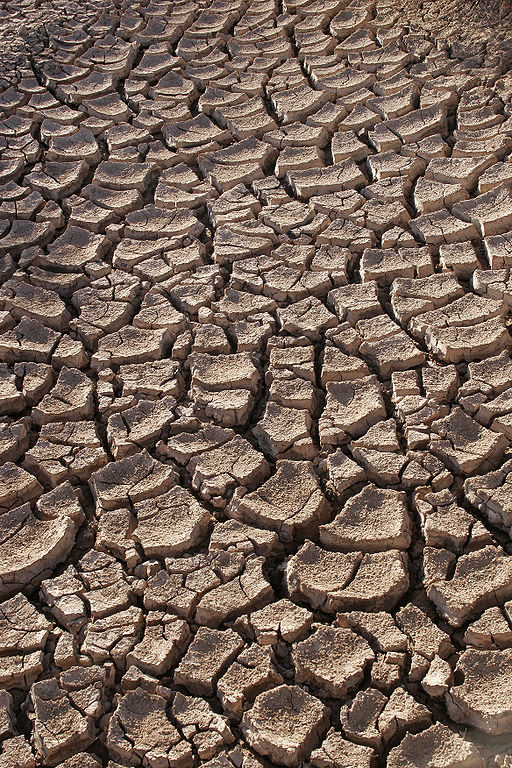
Image: Drought - Tomas Castelazo © Wikimedia Commons under Creative Commons Attribution-Share Alike 3.0 Unported / GNU Free Documentation License
Many people in Sub-Saharan Africa are already on the hunger line and droughts will only make this worse. The areas in North America and Eastern Europe likely to be affected are the biggest global grain producing areas which could easily cause global food shortages and big increase in food prices.
Certain countries also have physical characteristics that can increase their vulnerability to climate change.
Question
Can you think of any examples?
Help
The countries that fall into this category include the island nations of the Pacific, countries in Sub-Saharan Africa which border the Sahara Desert and Bangladesh where 70% of the country is 1 metre or less above sea level.
What Can We Do To Help Prevent Climate Change
In the other linked article we introduced concepts such as adaptation, mitigation, technology transfer, emissions and sinks.
What causes climate change? - Click below
Rather than thinking about the big things that governments can do we about these we are going to think a bit more about what we can do at a personal level, household level, school level, community level and at a level of our local authorities in Wales.
Adaptation
It makes sense to think ahead;
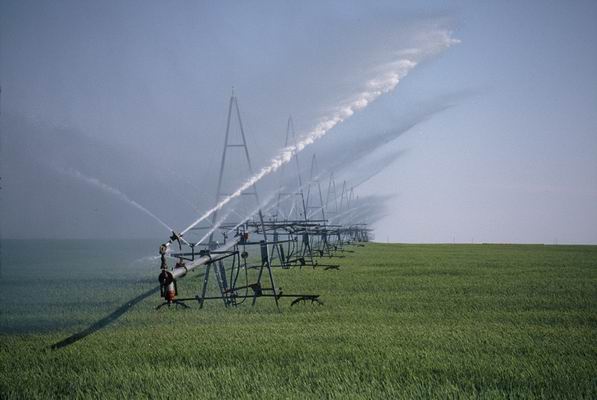
Image: Irrigation1 - Paulkondratuk3194 © Wikimedia Commons under Creative Commons Attribution-Share Alike 3.0 Unported / GNU Free Documentation License
Question
Can YOU suggest what steps we could take to adapt to climate change?
Ideas
Use a small group activity you know to come up with suggestions:
- Thought Shower Activity
- Group post-it challenge
- Think Pair Share
- Jigsaw to Fours to Feedback
Is it wise to continue to keep constructing new buildings on flat land next on coastlines and along the floors of river valleys?
Can farmers change the crops that they grow?
Can we reduce our use of water so that more is available if there is a drought?
Can we introduce new species to replace those that will struggle in our new climates?
How can we improve the way in which we respond to a greater frequency of severe storms?
Mitigation
What can we do to reduce the impacts of the consequences such as by accessing more water from underground or building new reservoirs to cope with droughts?
What can we do if crops fail and there is a food shortage?
Can we build flood defences to protect against sea level change and increased storms frequency and severity?
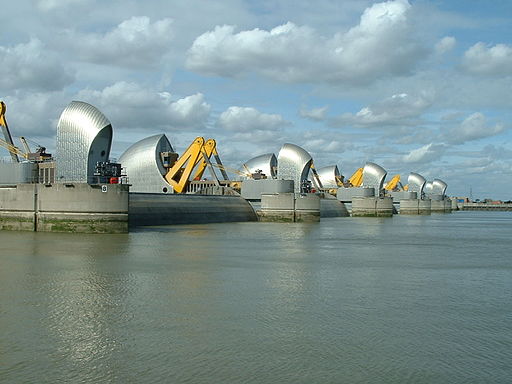
Image: Thames Barrier 03 - Andy Roberts © Wikimedia Commons under Creative Commons Attribution 2.0 Generic
Emissions
How can we reduce the fossil fuels that we burn to heat our homes or travel from place to place?
What can we do with our waste?
Increasingly many of us are recycling our food waste but how many of us actually know where it goes?
It mostly goes into large tanks called anaerobic digesters to make biogas.
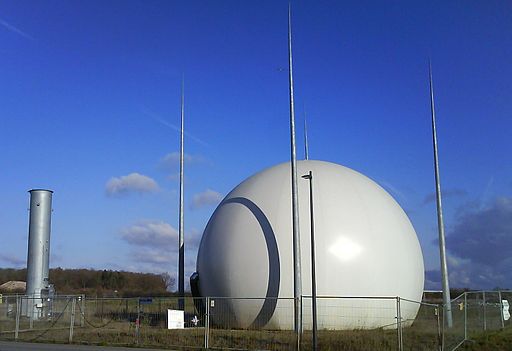
Image: Biogasholder and flare - Vortexrealm © Wikimedia Commons under Creative Commons Attribution-Share Alike 3.0 Unported / GNU Free Documentation License
This can be used instead of fossil fuels in any way that we currently use gas such as electricity power generation and even to power cars and any car that currently runs on LPG (Liquid Petroleum Gas) can run on Methane instead.
Anaerobic digestion can also be used on all of our own faeces and also the manure of animals from farms!
Can we reduce how much meat that we eat?
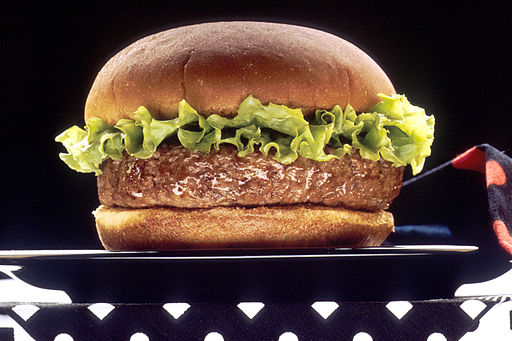
Image: NCI Visuals Food Hamburger - Len Rizzi © Wikimedia Commons - Public Domain
Sinks
Can we stop buying products that have come from forests that have not been replanted?
Can we plant more trees in our communities, schools and gardens?
Student activity
After reading all three articles and carrying out the activities. Use the accompanying A3 sheet to help you to carry out a Decision Making Exercise into different viewpoints on climate change in different types of countries.

